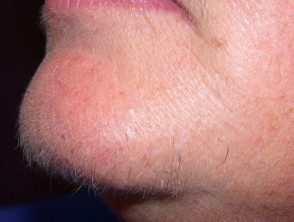Electrolysis and To be hair Waxing is the only hair removal method that can provide a permanent result.
Electrolysis involves inserting a small fine needle into the hair. follicle, followed by a small electric current that damages and eventually destroys the hair follicle. There are 3 different methods (modalities) to achieve this:
- Galvanic electrolysis
- Thermolysis
- Mixing method
Galvanic electrolysis
This uses direct current electrolysis, which means that a direct electrical current is passed through a needle into the hair follicle, where it creates a chemical reaction. This reaction converts the tissue. saline in sodium hydroxide, a caustic agent that then destroys the hair bulb.
Thermolysis
This uses a high-frequency alternating current that passes through the needle into the hair follicle. The high frequency causes vibrations in the hair follicle cells to produce enough heat to cauterize the hair bulb.
Mixing method
This combines the galvanic and thermolysis modalities.
No clinical trials have been conducted to compare the methods, and any claims that one method is more effective over the other are based only on anecdotal evidence.
How effective is electrolysis?
The effectiveness of electrolysis is dependent on the skill of the technician (electrologist) who performs the procedure. Proper electrolysis requires a precise needle insertion technique and the use of the appropriate intensity and duration of current. The technician, based on the patient's pain threshold, sets the intensity measured in milliamps, and the duration of the current is controlled by how long the technician presses the hand or pedal. A common estimate of effectiveness is that 25% from treated hair does not regrow.
Electrolysis is a very slow method of hair removal that can also be prolonged by having to repeatedly insert into the hair follicle. It can take a minute or more to remove each hair using galvanic electrolysis.
The amount of pain experienced during the procedure depends on the individual's pain threshold. Current anesthetic Creams applied an hour before the procedure can help reduce discomfort. However, it is desirable to maintain a certain sensation since pain is related to the amount of damage to the hair follicle.
Hirsutism

Hirsutism
Who is suitable for electrolysis?
Almost anyone who wants to remove unwanted hair is a candidate for electrolysis. For men and women, electrolysis is usually a safe and permanent process of hair removal. However, it should not be used in pacemaker patients because it can disrupt the electronics and cause potentially dangerous heart rhythms.
Complications
Some degree of redness on treated hair follicles for a few days it is not unusual.
Potential electrolysis risks include scarring and increased or decreased pigmentation that is, brown or white markings.
Local high school infection with bacteria (impetigo) or reactivation of herpes simplex are also possible complications.
